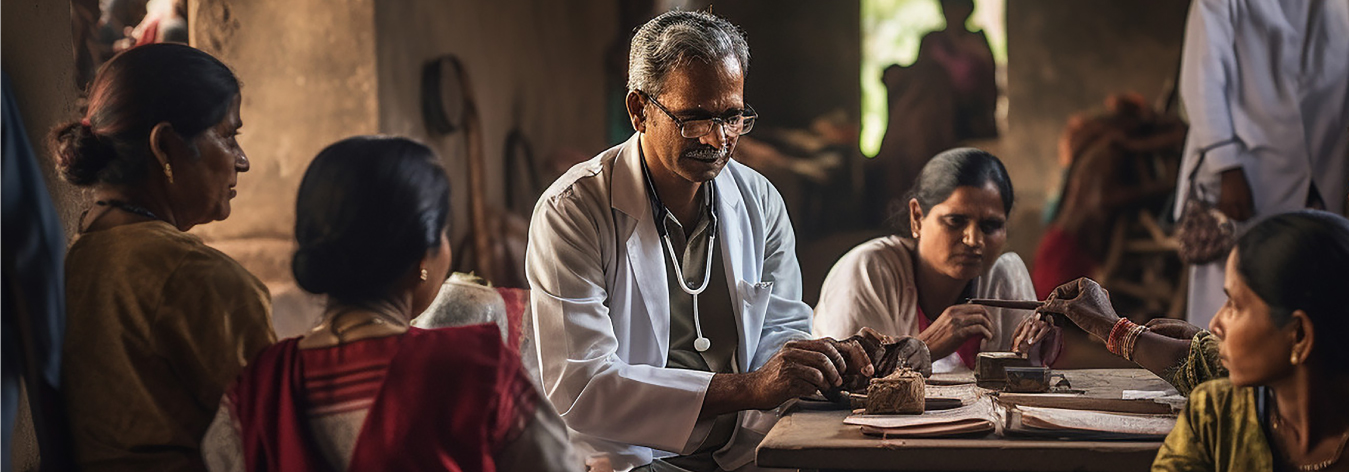News and Insights
Empowering communities: Role of grassroots advocacy in Indian public health
June 24, 2024
Let’s think of a small village in the heart of rural India. Generations have lived off the land with their lives intricately woven in the rhythms of nature. However, healthcare resources are scarce, and the nearest hospital is a distant journey away. Amidst these challenges, passionate individuals have emerged—ordinary villagers with a determination to change their community’s health landscape. They form a grassroots advocacy movement, driven by a shared vision of healthier futures for their families and neighbours. This story mirrors countless others across India, where grassroots advocacy serves as a beacon of hope in the realm of public health. From amplifying voices to catalysing change, grassroots advocacy stands as a powerful force for empowering communities and shaping policies that prioritize the well-being of all.
Catering to the grassroots
Empowering communities and fostering grassroots advocacy are pivotal in addressing public health challenges in India. It begins by actively involving community members in identifying health issues and designing solutions. By organizing community meetings, workshops, and outreach programmes, advocates create spaces for dialogue and collaboration, ensuring that interventions are culturally sensitive and contextually relevant.
Such advocacy also helps in raising awareness about public health issues. Through educational campaigns, door-to-door outreach, and media engagement, advocates disseminate information about preventive measures, available healthcare services, and rights to access healthcare. This empowers individuals to make informed decisions about their health and encourages early intervention.
Grassroots advocacy also builds the capacity of community members to become advocates for their own health. Moreover, by organizing rallies, petitions, and meetings with policymakers, advocates can demand policies that address underlying social determinants of health, such as poverty, education, and access to clean water and sanitation. This ensures that policies are inclusive, equitable, and responsive to the needs of the most vulnerable populations.
Additionally, it monitors the implementation of health policies and programmes by collecting data, conducting surveys, and engaging in community feedback mechanisms. These advocates hold governments and healthcare providers accountable for their commitments to improve health outcomes.
For instance, in India, the ASHA (accredited social health activist) workers, part of the government’s public health initiatives, play a crucial role in community health. They promote immunization, maternal and child health, and sanitation, alongside creating awareness on health and its determinants. They counsel on birth preparedness, breastfeeding, and access to healthcare services, while facilitating community access to government health programmes.
Similarly, the anganwadi workers (AWW) manage the anganwadis under the Integrated Child Development Scheme (ICDS). Their duties include community mobilization, growth monitoring of children, preschool activities, and supplementary nutrition planning. Moreover, the auxiliary nurse midwives (ANM) operate at sub-centres, focusing on maternal and child health, immunization, and family planning. Together, these frontline health workers form a crucial network in our public health system.1
Moreover, NGOs (non-governmental organisations) serve as catalysts for grassroots advocacy, mobilizing communities, building partnerships, and advocating for policies that promote health and well-being at the local level. Through their efforts, they contribute to building resilient, inclusive, and equitable health systems. For example, in 1976, India introduced the National Program for Control of Blindness, the world’s first of its kind, with the goal of reducing the prevalence of blindness to 0.3% by 2020. These initiatives prioritized the identification and treatment of cataracts, the primary cause of blindness, by mobilizing NGOs and grassroots-level workers. These concerted actions have led to a notable decrease in the prevalence of blindness in India over the past three decades, dropping from 0.83% in 1990 to 0.64% in 2020. This represents significant sight-saving measures for over 200 million individuals in India.2
In essence, grassroots advocacy serves as a driving force for community empowerment, social mobilization, and policy change in Indian public health. By empowering communities to advocate for their rights and actively participate in decision-making processes, grassroots organizations contribute to building a healthier, more equitable future for all.
TAGS: Health, Technology
